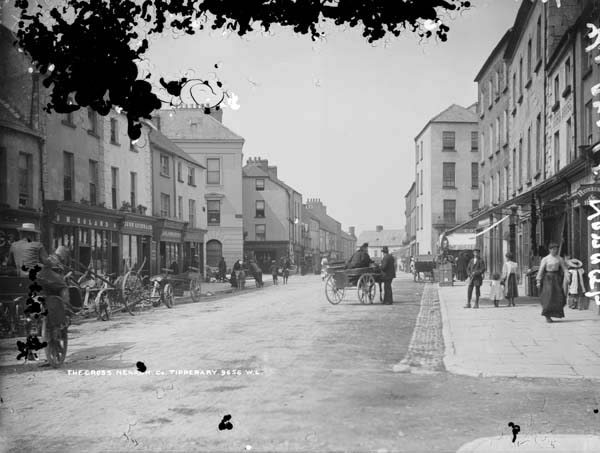Nenagh meaning “The Fair of Ormond” or simply “The Fair”, is the county town and second largest town in County Tipperary in Ireland. Nenagh used to be a market town, and the site of the East Munster Ormond Fair.
Nenagh is located in the Barony of Ormond Lower which was the traditional territory of the O’Kennedys prior to the Norman invasion of Ireland. This land was included in the grant made by King John of England to Theobald, the eldest son of Hervey Walter of Lancashire, England. Theobald was subsequently appointed Chief Butler of Ireland. Nenagh Castle was built c. 1216 and was the main castle of the Butler family before they moved to Gowran, County Kilkenny in the 14th century. The family later purchased Kilkenny Castle which was to the main seat of their power for the next 500 years. The town was one of the ancient manors of the Butlers who received the grant of a fair from Henry VIII of England.
They also founded the medieval priory and hospital of St John the Baptist, just outside the town at Tyone. A small settlement grew up around the castle, but it never seems to have been of any great importance other than as a local market throughout the medieval period. An important Franciscan friary was founded in the town in 1252 in the reign of Henry III of England which became the head of the Irish custody of West Ireland and was one of the richest religious houses in Ireland. The Abbey was in use for six hundred years; Fr. Patrick Harty, who died in 1817, was its last inhabitant.
The town seems to have been refounded in the 16th century. In 1550 the town and friary were burned by O’Carroll. In 1641 the town was captured by Owen Roe O’Neill, but shortly afterwards it was recaptured by Lord Inchiquin. It surrendered to Ireton in 1651 during the Cromwellian period and was burned by Sarsfield in 1688 during the Williamite Wars. Apart from the Castle and Friary most of the town’s buildings date from the mid-18th century onwards when its sale out of Butler ownership led to the large-scale grant of leases and the subsequent growth of industries and buildings. The town’s growth and development was accelerated in 1838 when the geographical county of Tipperary was divided into two ridings and Nenagh became the administrative capital of the North Riding. In this period Daniel O’Connell held one of his Monster meetings for Repeal of the Act of Union at Grange outside of Nenagh.
In the 19th century Nenagh was primarily a market town providing services to the agricultural hinterland. Industries included brewing, corn processing, coach building and iron works with the addition of cottage industries such as tailoring, dressmaking, millinery, shoemaking, carpentry, wood-turning, wheelwrighting, harnessmaking, printing, and monumental sculpting. The Nenagh Co-operative Creamery was established in 1914 providing employment in milk processing and butter-making.


